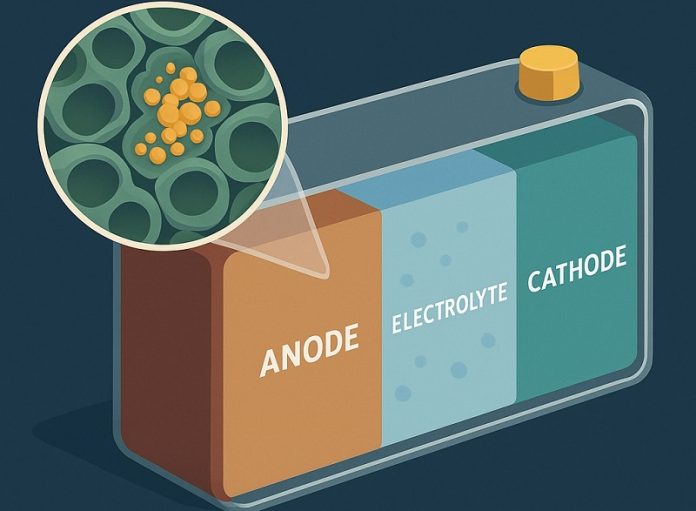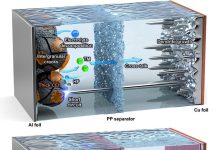
A team of scientists from South Korea has developed a new material that could make lithium-ion batteries charge faster, last longer, and store more energy.
This breakthrough could lead to better batteries for everything from smartphones to electric cars and renewable energy systems.
The research was led by Professor Jae-Min Oh from Dongguk University, in collaboration with Professor Seung-Min Paek from Kyungpook National University.
Their study, published in Chemical Engineering Journal, introduces a specially designed material for the battery’s anode—the part of the battery where electricity flows in during charging.
This new material is a mix of several components working together.
It combines reduced graphene oxide (rGO), which helps electricity move through the battery more quickly, with nickel and iron-based compounds that can store more energy.
By combining these materials at a tiny scale—called the nanoscale—the team created a strong and efficient structure.
To build this hybrid material, the researchers used a special process involving polystyrene beads as a template.
These beads were coated with the building blocks of the new material and then removed, leaving behind hollow, sphere-shaped structures. When heated carefully, the structure changed into a mixture of nanocrystals and amorphous particles, forming the final composite: rGO/NiFe₂O₄/a-NiO.
The design keeps the material stable, prevents damage during battery use, and allows faster charging and discharging.
Tests showed that this new anode material is highly effective. It delivered a very high capacity—1687.6 milliampere-hours per gram (mA h g⁻¹)—even after 580 charge and discharge cycles. That’s much better than traditional anode materials.
It also performed well when tested under faster charging conditions, showing that it can keep up with modern energy demands.
The research team believes this success comes from their ability to combine different materials in a way that makes them work better together—a concept known as synergy. Instead of improving just one part of the battery, their approach boosts the overall performance by combining the strengths of each material.
Professor Oh said that future battery technology will rely on these kinds of smart combinations, creating more powerful and efficient energy storage. Professor Paek added that the achievement was possible thanks to collaboration across different fields of materials science.
This research could lead to smaller, lighter batteries with longer life and faster charging times—great news for anyone who uses electronic devices or supports clean energy solutions.
The team hopes their work will help shape the batteries of the future within the next 5 to 10 years.



